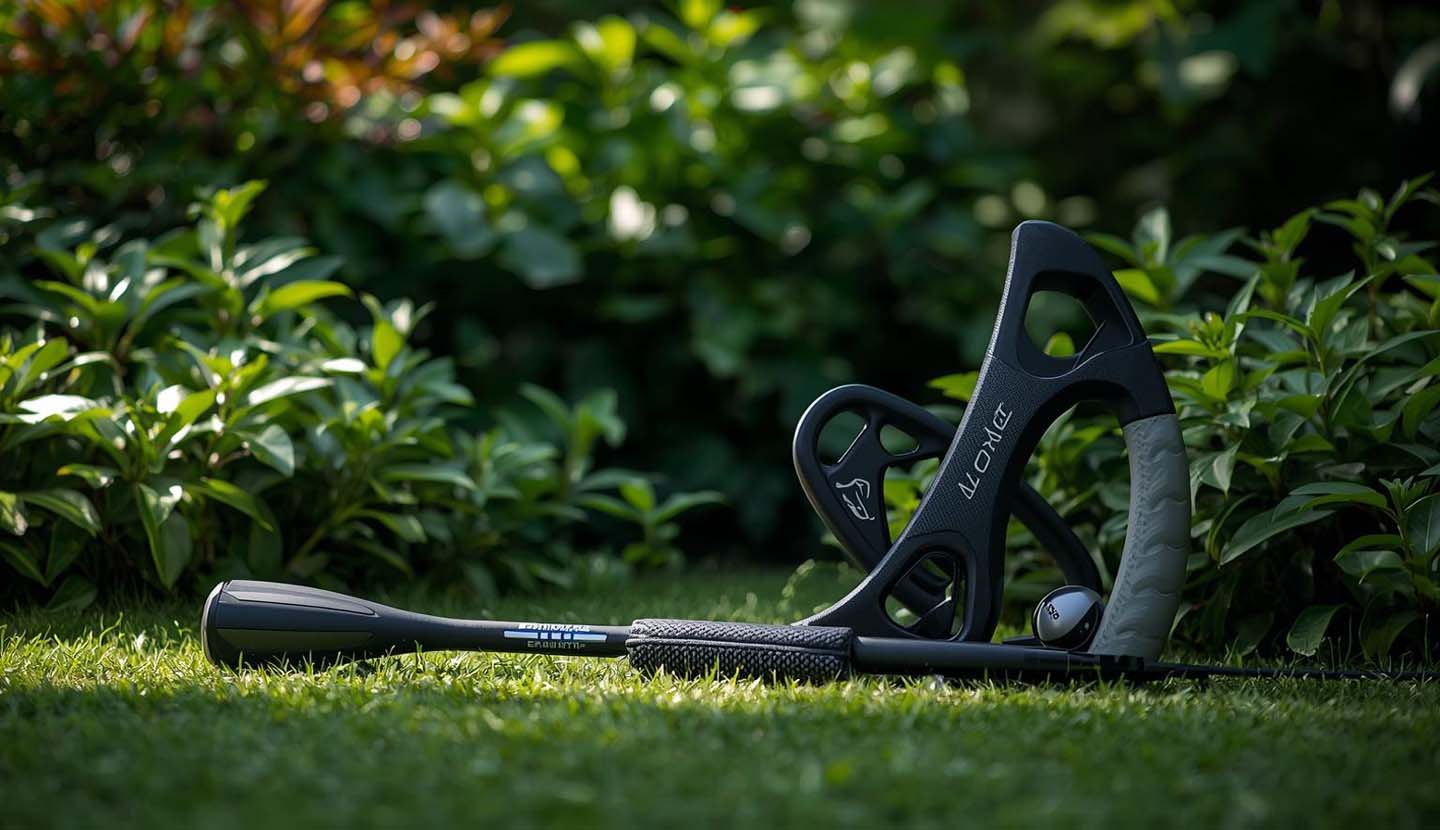Here, we will discuss what golf training aids actually work.. Golf training aids are naturally tempting, with bright packaging, bold claims, and quick-fix promises. The hard truth is simple: some golf aids genuinely help, but only when used for the right purpose, with consistent practice and a plan.
Below, I’ll cut through the hype, group the aids that reliably work by what they improve, and explain in detail how to use them so you don’t waste time or money.
The underlying principle: practice + feedback > gadget
A training aid is only useful if it helps you identify an error, feel the right motion, or receive objective feedback you can act on. Short practice bursts with immediate feedback are far more effective than long, unstructured sessions with many gadgets. Low-cost repetition tools (alignment sticks, towels) often beat flashy devices if you don’t know what to practice. (This is the common thread across expert roundups and hands-on tests.)
1) Alignment tools and simple tempo devices — the best first purchases
What they are: alignment sticks, putting rails, simple weighted swing sticks (e.g., SKLZ Gold Flex), or a towel under the arm.
Why they work: They give immediate, repeatable feedback on path, alignment, and tempo. They’re cheap, durable, and force one constraint at a time (shoulders, clubface, body alignment).
How to use them: Conduct short, focused drills—10–15 minutes daily—targeting a single habit (e.g., “feet and shoulders square” or “maintain connection through impact”). Alignment drills quickly convert feel into measurable outcomes. Multiple expert lists name these as foundational tools.
2) Swing trainers that teach rhythm and sequence — Orange Whip, SKLZ, ONE Club
What they are: flexible, weighted trainers designed to teach tempo, balance, and the proper sequence (e.g., Orange Whip, SKLZ Gold Flex, ONE Club, Lag Shot).
Why they work: They exaggerate timing errors and give you an immediate feel for a smooth, connected motion. Used consistently as a warmup or short groove session, they build motor patterns that transfer to the real swing. Several product tests and coach recommendations put Orange Whip and flexible-shaft trainers near the top for most golfers.
How to use them: 5–10 minutes pre-round as a warmup, plus 10-minute daily groove sessions. Focus on rhythm (even backswing/downswing) and balance — not hard hits. If you can’t hold the balance at the top or you yank on the downswing, the trainer will make it obvious.
3) Speed systems — SuperSpeed and weighted protocols
They are structured sets of overspeed and underspeed clubs aimed at increasing swing speed and tempo (SuperSpeed Golf system).
Why they work: They use neural adaptation and specificity. Training with varied weights conditions the nervous system to accelerate more efficiently, which can raise clubhead speed. Many golfers and a number of tour pros have used these systems with measurable gains.
How to use them: Follow the manufacturer’s 8–12 week protocol. Don’t randomly swing heavy golf clubs; follow the prescribed reps, rest, and progression to reduce injury risk and achieve measurable gains.
4) Putting aids that actually change results — PuttOut, WellPutt, simple mirrors & mats
They are returners, mats with markings or alignment lines, putting mirrors and gates, and interactive mats with drills.
Why they work: Putting is largely pattern recognition and feel. A good mat with consistent roll plus drills that force a repeatable stroke (PuttOut, WellPutt, putting mirrors) gives focused feedback you can measure immediately. Recent blind tests show expensive mats can be worth it for tempo and face alignment drills.
How to use them: Practice short, high-quality reps with a clear target and a pre-shot routine. Use mirrors to check eye position and shoulder alignment; use returners to create high-rep pressure drills.
5) Tech and sensors — Phigolf, HackMotion, launch monitors and mobile sensors
They are wearable wrist sensors (HackMotion), swing sticks with sensors (Phigolf), launch monitors, and radar units.
Why they work: They always provide objective data—wrist angles, club path, face angle, speed—so you can measure progress instead of guessing. Sensors accelerate learning for golfers who respond well to numbers (or coaches who program with data).
However, data without coaching is noise. How to use them: Use sensors to confirm a focused drill. Don’t chase every metric. Pick 1–2 measurable goals (e.g., reduce an out-to-in path by X°; increase clubhead speed by Y mph) and measure weekly.
6) Putting the pieces together: multisystem aids & force plates
High-end tools (force plates, Bal. On Smart Kit, multi-function kits) are powerful because they combine pressure/weight data with video or app guidance. They’re best for serious players or coaches who will interpret the results. For most amateurs, they’re overkill.
7) What doesn’t reliably work (or is misused)
Expensive single-claim gadgets with no real feedback loop or practice plan.
Buying multiple aids at once and expecting synergy often confuses your motor patterns.
Random “feel” gadgets without objective measurement or a coach to validate progress.
Simple, cheap tools and a clear plan beat novelty toys every time.
How to choose the right aid for you (Best checklist)
Define the one problem you want to fix (tempo, alignment, putting line, proper speed).
Pick one aid that specifically addresses that problem.
Commit to a targeted short, daily practice routine (10–15 minutes) for 4–8 weeks.
Measure progress (need video, a sensor, or a simple note: miss left → 3/10, miss right → 7/10).
Stop or change the aid if there’s no measurable improvement after a month.
Final Word
Training aids can work — but only when you pick the right one for a single problem and apply it with consistency and measurement. Start cheap (alignment sticks, mirrors, a flexible swing trainer), build a habit, and then layer on tech or advanced systems if you need precise feedback. The single biggest mistake is treating gadgets like shortcuts rather than coaching aides.
